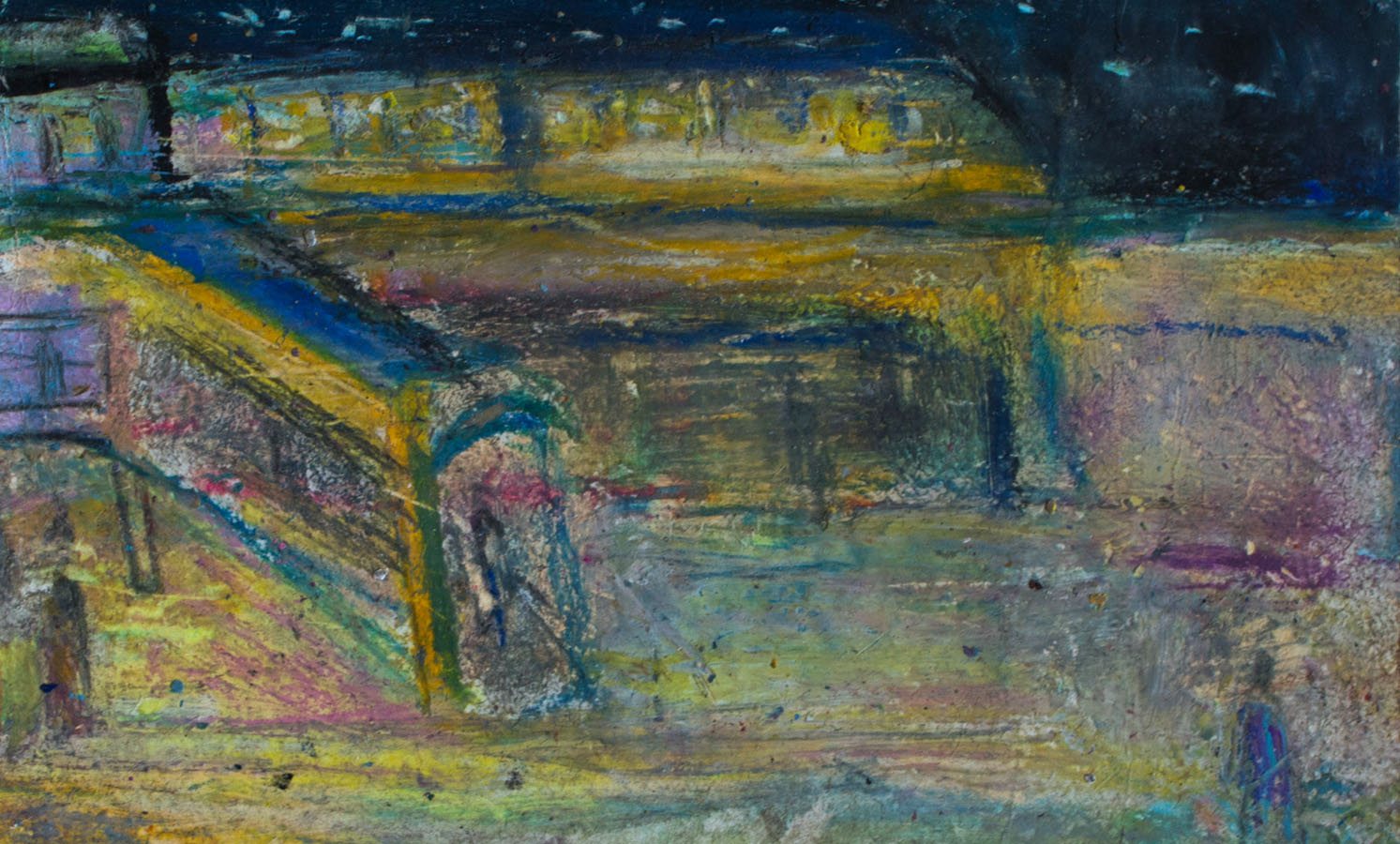4. Painting the Scene
1
I remember walking across The Brooklyn Bridge with my parents when I was a young boy. We looked down at the old stained worn wooden piers. I was surprised when my father said, “They would be wonderful to paint.”
It took a great leap of imagination for his and the preceding generation (e.g., among so many others, Bellows, Bishop, Curry, Henri, Luks, Marsh, Shahn and Sloan) to conceive factories, bridges, gray repetitious flat Midwestern towns, gas stations, “open all night diners”(the normal scenes, operations, interactions and debris of urban America) as appropriate for art.
2
Paintings of a “contemporary scene” may have profound personal, medial and archetypical resonance.
“The Employment Agency” and other paintings by my father synthesize uniqueness, common humanity and socio-cultural specificity. In his painting of the Spanish Civil War a dying loyalist fighter rests his head on his mother’s lap. It translates “The Pieta” into modern terms (as Christian art translated Greco-Roman images and themes).
Hopper’s work is as much about interplay of shadow and of light as about urban life… In a late painting of an empty room the theme of “being” and “nothing”_ always present in his work as subtext _ is directly beautifully addressed.
Burchfield developed his own effective visual vocabulary of archetypically significant forms in which he “spelled” each particular closely observed scene.
Jacob Lawrence’s paintings depend on brilliantly abstracted figurative drawing. They work as flat interlocking patterns and as closely observed scenes. – Through these beautiful expressive designs, Lawrence traces present and historical Afro-American life.
In Stuart Davis’ work, objects and letters join in abstract interpenetrations within a strange flat artificial brightness. It is so complete – so personal – so perfect of its kind – that he could have no major followers…There are limitations, there is no dirt in Davis’ urban scenes.
I experience the graphic artist Louis Lozowick as an “American futurist,” yet more respectful of received particulars than the Italian movement: figures and buildings are integrated (not dissolved) in abstracted intensified urban rhythms.
Romaire Bearden celebrated Afro-American existence through powerful eloquent syntheses of collage and direct painting. – Louis Guglielmi seamlessly integrated an authentically observed deeply felt urban particularism with “surrealism.” – In “The Brooklyn Bridge” Joseph Stella, an explicit futurist, created one of the most powerful urban emblems in world art.
There were so many fine artists, many almost completely forgotten. Yet this is a topic for another time. Images surround me as I write: the beautiful color and sensitivity to light of Alexander Brook, the long complex careers of Bernard Karfiol, Walter Stumpfig and my teacher Stefan Hirsch. I’m glad to see that Aaron Bohrod, Alexander Hogue and Joe Jones have returned.
3
The urban world is different now than in the 30s and 40s.
There are broken ruined neighborhoods, as though we had been bombed out in war: buildings so dirty, worn, peed on, shat on – saturated with human touch – that they are almost alive.
The light now in a city at night never existed before.… Visiting the country I was shocked… a little frightened…. to feel true darkness.
We have built “a new nature”… Original nature repressed threatens to return in nightmare forms: cockroaches, rats in subways.
Homeless people more abandoned to nature than the earliest Neolithic tribe exiled from the crowds they walk through wander the streets.
There are few artistic paintings and drawings emerging from this urban scene (yards and yards of banal paintings imitating photographs but they “don’t count”) … No one captures our new light.
There is inspiration in the recent past.
Philip Reisman continued all his long career to interpret New York street life. His late work rough… at times crude captures in acid bitter blues, greens, yellows and purples, glimpses of this new scene.
George Grosz created in the pre-Nazi chaos of the Weimar Republic permanently contemporary images of urban decadence. The American, Richard Lindner is often labeled a “pop artist.” Yet he was not trapped within commercial forms. He transformed images from popular culture into a personal, sharp, hard, mysterious vision …. In Grosz all masks are removed, as though one turned over a rock. Lindner’s cold metallic painted figures are ritually stylized as “Kachina dolls.”
The recent fruitless chaos of visual art has left this new urban scene almost untouched for you to translate into art.
*
The above is an Excerpt from Living Art by Avron Soyer, Click here to Read the Final Section-


